Wed 23 Aug 2023
The Amazing Colossal Belgian: A Quartet of Christie Expansions Part 2: “Murder in the Mews” by Matthew R. Bradley
Posted by Steve under Reviews[5] Comments
A Quartet of Christie Expansions
Part 2: “Murder in the Mews”
by Matthew R. Bradley
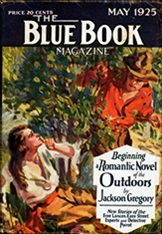
“The Market Basing Mystery” (The Sketch, October 17, 1923; The Blue Book Magazine, May 1925) was collected in the U.S. in The Under Dog and Other Stories (1951), and in the U.K. first in Thirteen for Luck! (1966), a catch-all volume for young readers, and then in Poirot’s Early Cases (1974). It was expanded into the title novella (aka “Mystery of the Dressing Case”) of Murder in the Mews and Other Stories (truncated as Dead Man’s Mirror; 1937), which debuted in Redbook Magazine (September & October 1936). With his formidable “little gray cells,” Agatha Christie’s Belgian super-sleuth, Hercule Poirot, perhaps found the mystery itself less baffling than that barrage of appearances and titles!
First mentioned here, and thought to be based upon Basingstoke and/or Christie’s future home of Wallingford, Market Basing would be the setting for stories and novels featuring Jane Marple, Superintendent Battle, and Tommy and Tuppence Beresford; Poirot himself returned there in Dumb Witness (aka Poirot Loses a Client; 1937). Inspector Japp, while off duty “an ardent botanist,” suggests a weekend with Poirot and Hastings in that “little country town,” where he craves anonymity: “Nobody knows us, and we know nobody.” But Constable Pollard, transferred from a nearby village where he’d met Japp through “a case of arsenical poisoning,” interrupts them over an English breakfast at the local inn.
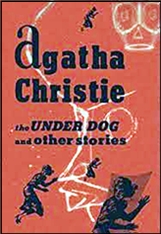
He summons them to “rambling, dilapidated” Leigh House, rented eight years ago by the virtual recluse Walter Protheroe, shot through the head; the locked door, bolted windows, and pistol in his hand suggest suicide, but per Dr. Giles, the bullet entered behind his left ear — yet the gun was in his right hand, the fingers not closed over it. There is no obvious motive, with the only apparent suspects his devoted housekeeper of 14 years, Miss Clegg, and his recently arrived guests from London, Mr. and Mrs. Parker. Examining the scene, Poirot focuses on two aspects: the smell — or lack thereof, inconsistent with Protheroe’s being a heavy smoker — and the handkerchief he had carried in his right-hand coat sleeve.
The former suggests that the window had been open all night, and the latter indicates that he was left-handed; a broken cuff-link found by the body is identified as Parker’s by Miss Clegg, who says they were neither expected nor welcome. A tramp who often slept in an unlocked shed reports overhearing Parker attempting to blackmail Protheroe, revealed as an alias for Wendover, a Naval lieutenant who “had been concerned in the blowing up of the first-class cruiser Merrythought, in 1910.” Put on trial, Parker is cleared by Poirot, who gets Miss Clegg to admit that having found Protheroe a suicide, she blamed Parker, implicating him by repositioning the gun, bolting the window, and planting the cuff-link.
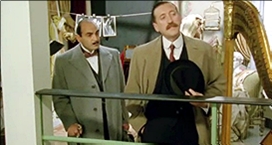
Almost six times as long as the original, “Murder in the Mews” was adapted in 1989 with David Suchet on Britain’s ITV in Agatha Christie’s Poirot, which unsurprisingly omitted “Market Basing.” The third-person novella features Japp (now a Chief Inspector) but not Hastings, while Pollard and Giles have been supplanted by Divisional Inspector Jameson and Dr. Brett, respectively. This marks Jameson’s only literary appearance; played, as he was in “Mews,” by John Cording, he was interpolated into their 1990 adaptation of “The Lost Mine” (The Sketch, November 21, 1923; The Blue Book Magazine, April 1925) from the collections Poirot Investigates (1925) — here in the States — and Poirot’s Early Cases.
Taking a shortcut through Bardsley Gardens Mews to Poirot’s flat on Guy Fawkes Night, he and Japp remark that it would be perfect for a murder, since the fireworks marking the plot to blow up Parliament would hide the sound of a shot. The next morning, Japp asks Poirot to accompany him back there when summoned by Jameson to the scene of what at first seemed a suicide; he and Brett, who forced open the door, show them the body.
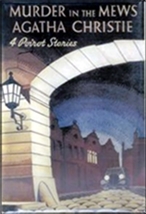
The set-up, with the misaligned wound and gun, is the same, but Christie rings her changes on the victim — young widow Barbara Allen, who lives with her friend Jane Plenderleith and is engaged to Charles Laverton-West, “M.P. for someplace in Hampshire” — and suspects.
Charles, with no apparent motive yet a flimsy alibi, resents being questioned, due less to guilt than to being, says Japp, a “[b]it of a stuffed fish. And a boiled owl!”; housekeeper Mrs. Pierce merely provides a torrent of chatter. Blackmailer Major Eustace met Barbara years ago in India and knew that “having borne an illegitimate child who died at three” she invented a fictitious late husband, a revelation she feared would damage Charles’s career.
Carried over are the clues of the smokeless room (Poirot invokes Conan Doyle’s “curious incident of the dog in the nighttime,” which did nothing) and cuff link, with a wristwatch replacing the handkerchief, supported by a writing table that has the pen tray on the left.
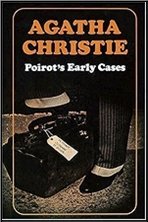
Eustace admits visiting Barbara, ostensibly to offer investment advice, but the neighbors report his saying goodbye to her at 10:20; his subsequent movements are accounted for, yet when it is realized that nobody actually saw or heard her half of the conversation from inside the doorway, he is arrested. Confronted with the truth, Jane reluctantly agrees that she cannot let Eustace — already facing a long prison sentence for an unrelated swindle — take the blame for Barbara’s death. Jane admits finding her body and suicide note, which she burned, and restaging the scene to frame Eustace, so despite its title, the case remains, as Japp puts it, “Not murder disguised as suicide, but suicide made to look like murder!”
Among her clever recombining and expanding of elements, Christie adds one that nicely shows the ingenuity of Jane, who professes first perplexity at the possibility and method of Barbara’s suicide, and then outrage at the notion of murder. Visibly discomfited when asked to unlock a cupboard full of umbrellas, golf clubs, and tennis racquets, she displays anxiety over an attache case containing old magazines and other trivia. She is later seen throwing it into the lake by the golf course, whence it is retrieved, now empty, but this is a superb piece of misdirection: she had diverted their attention to the case when her real concern was Barbara’s left-handed clubs, tossed into the undergrowth along the course.
— Copyright © 2023 by Matthew R. Bradley.
Up next: “Dead Man’s Mirror.”
Edition cited —
“The Market Basing Mystery” and “Murder in the Mews” in Hercule Poirot: The Complete Short Stories: William Morrow (2013)
August 24th, 2023 at 1:26 pm
I read my way through the complete Poirot stories a while ago, but since I don’t remember this one, it looks like it’s time to start all over again!
August 24th, 2023 at 4:42 pm
Matthew’s usual deft scholarship and critical eye leave little room to comment other than to praise the result as usual.
I’ve come to a conclusion that Christie seems to consider murder less a crime against law and order than a moral failure that her detectives often try to prevent and having failed feel they have to restore the moral balance more than solve the puzzle.
August 24th, 2023 at 9:51 pm
That’s an idea that hadn’t occurred to me, and as a working hypothesis, it’s not a bad one. I have a Christie short story on tap for this weekend. Looks like I’ll have to read it now from a new perspective…!
August 25th, 2023 at 7:23 am
Agreed and thanks. That ties in nicely—without spoilers—with the denouement of Murder on the Orient Express.
August 25th, 2023 at 7:26 am
BTW, Steve, I’ve been reading the “complete” Poirot stories (which, by my count, is missing at least seven in the U.S. edition, in some cases due to expanded versions, but never mind) aloud to my lovely bride of 35 years, which is the precise impetus for this quartet of posts.